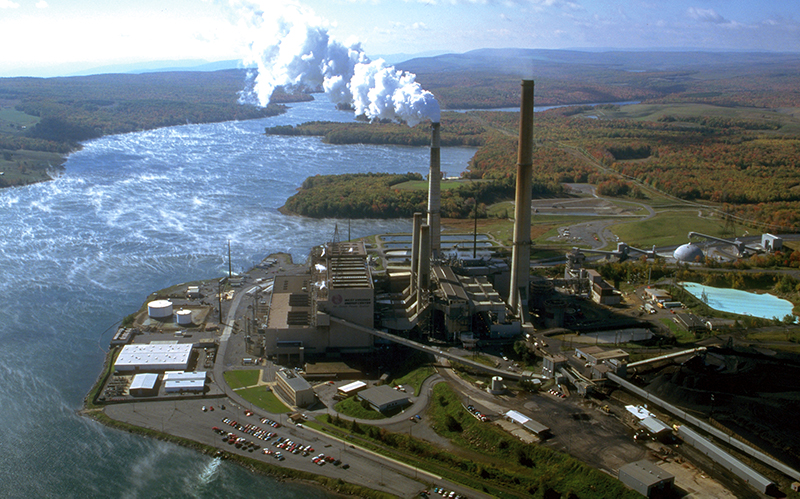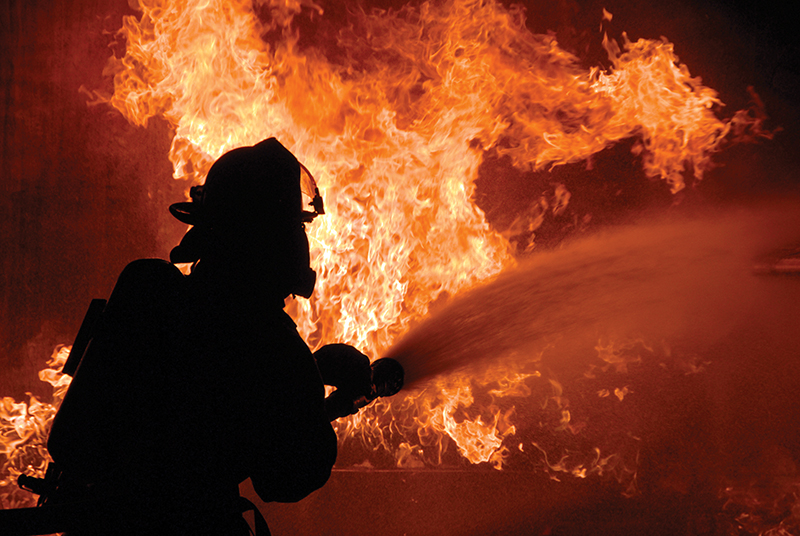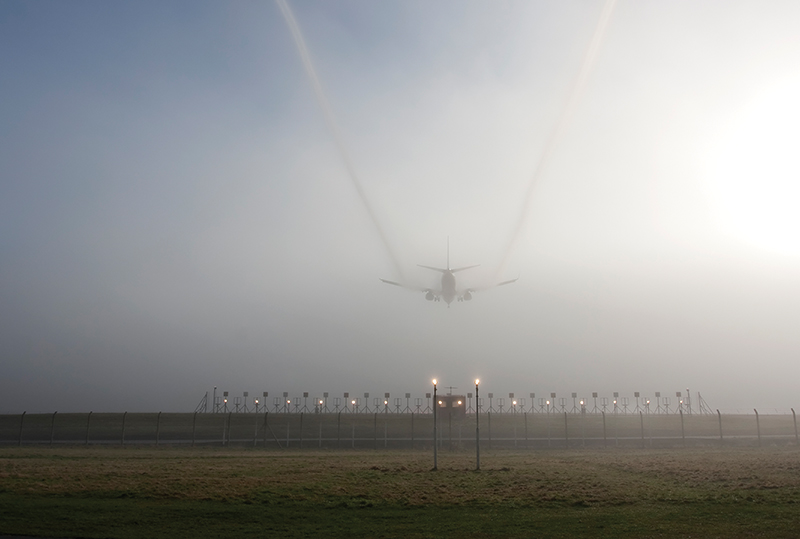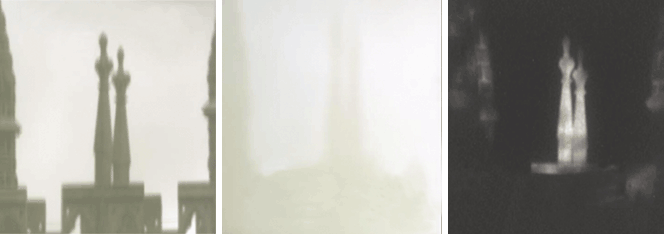
Laser Imaging Video Camera Sees through Fire, Fog, Smoke
NASA Technology
In November 2012, Bob Foraker was strolling through the NASA Technology Days expo in Cleveland, Ohio. He was there to look for technology that might apply to the line of retrofitted hybrid electric vans he helped to pioneer, but he stumbled on something he’d never seen before: a video camera capable of seeing through flames, fog, dust, and virtually any other obscurant, even at night.
Owner of an international business incubator, entrepreneur, and merchant banker with interests in real estate, software and technology development, energy, consulting, and a variety of other areas, Foraker happened to have once worked on a perimeter security project in Saudi Arabia. “I thought, wow,” he recalls, “this could really be put together for a perimeter security system on the border, at a factory or a nuclear power plant, or on a military installation.”
He made a proposition to enter into a collaborative agreement with the inventor, Richard Billmers, whereby Foraker would round up investors, find a chief financial officer, and help to develop a business model for what would become Canton Ohio-based Laser Imaging through Obscurants (LITO) Technologies Inc.
Security wasn’t the original intent of the technology, which ultimately could find use in a number of fields. Billmers had conceived of it a decade prior as a tool that would allow firefighters and other first responders to see through smoke and flames, and he had developed the capability working with the Navy. However, funding ran out long before the device was feasible or affordable for use in firefighting, so Billmers applied for a NASA Small Business Innovation Research (SBIR) contract through Langley Research Center in 2006 and was awarded Phase I and II contracts.
“When we saw it, we became very excited about it for our applications,” says Ivan Clark, senior research scientist at Langley’s Electromagnetics and Sensors branch and lead for the Lidar and Electro-Optics element of NASA’s Aviation Safety Program. Billmers had approached NASA with a working “fire lidar,” as he called it at the time (lidar being a common portmanteau of “light” and “radar”), capable of seeing through a blaze. Since it was also capable of penetrating almost any other obscurant, Clark saw potential for the device to increase visibility for aircraft under adverse conditions.
Much of NASA’s aviation efforts over the last decade have been in support of the Federal Aviation Administration’s (FAA) endeavor to update air traffic control, accommodating more flights while also increasing safety, Clark says. The FAA refers to this technological push as the Next Generation Air Transportation System, or NextGen.
An example of the need for this update can be found at San Francisco International Airport, where frequent fog causes backups that can mean planes end up grounded all over the country, waiting to fly into San Francisco, Clark says. “If you can see the other aircraft, you can get more aircraft in and out of an airport in a given time.”
This is the kind of issue Clark has been working on, as his job in support of NextGen has been to address atmospheric hazards to aviation. It’s also just the sort of problem Billmers’ invention could solve, along with other visibility issues pilots face.
The device works by sending out fast pulses of near-infrared laser light and then opening the aperture, or gate, just in time to catch them after they’ve reflected off the target object, Billmers explains.
Light travels at one foot per nanosecond, so the camera might send out a 10-nanosecond pulse of light and then wait about 50 nanoseconds to open the gate. In the interval, the light has passed through the obscurant, which reflects and dissipates some of it, then bounced off of whatever happens to be around 25 feet away, and returned to the camera.
“When I turn the camera on, all that near-term reflected light is gone,” Billmers says. “I can get rid of the near-term scattering, so I’m not blinded.” The laser light also scatters less than normal white light.
By adjusting the time that the gate waits to open, Billmers can train the camera on objects at different distances, and it is capable of reaching up to a couple of miles.
A closer object’s shadow can also make it identifiable, he explains. Something near the camera would show up as a silhouette against light reflected from objects farther away.
The camera can see through fire because it only catches a few nanoseconds’ worth of light from the blaze, which isn’t much compared to the concentrated laser light reflected from the object behind it. “I’ve time-gated out the fire, because there’s almost no light from it in that short window,” Billmers says.
Billmers concedes that there are other ways to look through obscurants. A thermal imager, for example, can see through smoke if it’s cold, but it doesn’t do well with fog because heat is absorbed by water. A thermal imager also cannot penetrate glass.
“There is no other system out there that can see through a flame sheet,” he says.
“Basically, this is a strobe video camera,” Clark says. Not only did the device Billmers had built with the Navy present an elegant solution to a difficult problem, but it had already been demonstrated to be effective, he says.
Technology Transfer
However, while the idea was relatively simple, the hardware to make it work was a technological challenge. Under the first two SBIRs with Langley, Billmers developed and refined his current prototype. “A lot of it has just been developing the hardware, making sure everything works, getting all the timings right,” he says, adding that he’s also run extensive tests to see what surfaces reflect better under various conditions. A third SBIR with Langley funded further testing into 2012. Billmers now holds several patents on the technology.
As the fledgling company came together, Foraker suggested commercializing the device for a ground application and using the income to continue developing the technology until it could be made small enough for use on airplanes. Billmers had already hit on the possibility of perimeter security after he was able to spot workers through dense fog while testing the camera on an Army base.
Foraker also had an idea for a proving ground for the technology—NASA’s Glenn Research Center, which is not far from his home, and with whom he had worked on a Space Act Agreement 10 years prior. “It also ended up at Glenn because there was a location there that they could not securitize, and we were able to solve it,” Foraker says.
In late 2013, less than a year after the encounter at NASA Technology Days, LITO Technologies had a Space Act Agreement with Glenn and another with Langley allowing the company to use the hardware—which still belongs to Langley—and incorporate it into the center’s security system.
The camera at Glenn is triggered by a tripwire-like laser and automatically turns to the place where the perimeter was breached, Foraker says, adding that another option would be to put it on a track for added mobility. Neither the triggering laser nor the laser light from the camera is visible to the human eye.
Joe Shaw, director of venture and partnerships at Glenn, who helped set up the expo where Billmers and Foraker met and who also guided the Space Act Agreement with Glenn, said he was pleased that the partnership was proving fruitful. “Based on our interactions with LITO and some of their early technology demonstrations through the SBIR, we are very excited about the possibilities for this,” Shaw says.
“We’re taking an aviation-needs SBIR with NASA Langley and turning it to a ground application at NASA Glenn,” Foraker says, adding that he still intends to eventually refine the technology for use in aviation, as well as a host of other applications.
Even as the company demonstrates the invention at Glenn, Foraker says LITO Technologies has already received some interest from potential clients and is ready to take orders. Each system will have to be customized depending on the distance to the perimeter and other factors.
Benefits
Billmers still looks to the day when the technology will help firefighters blinded by smoke and flames in the Santa Ana winds, and he doesn’t think that time will be far off. “We think we used the SBIR for exactly what it’s intended for, which is getting this thing commercially ready,” he says. “We now know how to build a system we can sell for perimeter security or for first responders.”
Foraker sees the perimeter security systems being useful in sandstorms at desert outposts, at nuclear power plants that are often on foggy lakes, on the US border, and at other facilities. LITO technology could also find an application in accident prevention on police and emergency vehicles, he says.
Jared Sullivan, who Foraker brought on as LITO’s chief financial officer, says the company is also partnering with an acoustics company to incorporate “localized acoustics” into the system, capable of pinpointing a sound between a person’s ears, in this case at distances of up to 600 meters. “Then it can say, ‘Please stop what you’re doing,’ or, ‘We can see you,’ or whatever,” he says.
Because low visibility is not always an issue, he says, LITO has to be considered a supplement to a system that includes other infrared and regular cameras.
Since he was first introduced to Billmers’ early “fire lidar,” Clark says, he has envisioned applications not only in perimeter security and enhancing safety and efficiency in aviation but also in shipping, where vessels have to make their way in and out of foggy harbors, and trucking, where it could prevent accidents and pileups in storms and fog.
“I think there’s a lot of commercial capability, and I think they’re right on the hairy edge of being able to do it,” he says, adding that he thinks the demonstration at Glenn is putting the company over the top and into the realm of commercial viability. “It’s the kind of thing that can do NASA proud.”

The LITO technology was originally conceived of as a “fire lidar” capable of seeing through flames. The technology was proven effective early on, and the company still envisions a device that would prevent firefighters and other first responders from being blinded by smoke and flames.

NASA’s Langley Research Center entered into three SBIR agreements with LITO Technologies, recognizing the technology’s potential to enhance visibility for pilots under adverse conditions. The company hopes to market the technology for ground applications and use revenues to advance it enough for use on aircraft.

Starting from the left, three pictures of a pair of church towers, all taken at 500 meters, demonstrate the LITO technology. Image 1 is a pair of church towers, as seen with regular, visible light. Image 2 is those same towers barely discernable through rain and drizzle by a regular camera. Image three is of the towers as seen with the LITO device through the same rain and drizzle.

Perimeter security for facilities such as nuclear power plants, which are often located on foggy lakes, is one possible application for Laser Imaging through Obscurants (LITO) technology. The prototype is currently being demonstrated for perimeter security at NASA’s Glenn Research Center.













